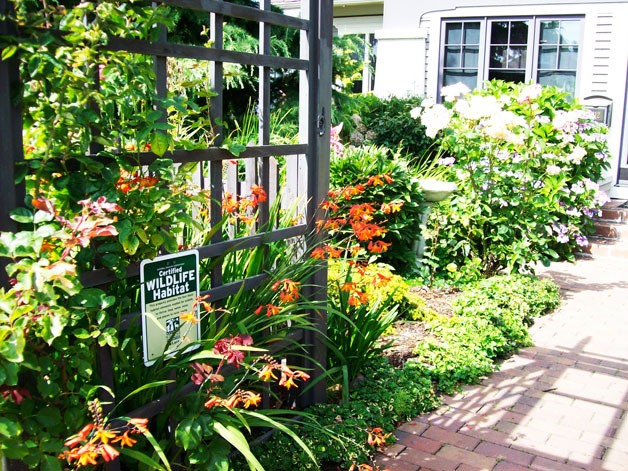Whidbey has made it to the wild side.
The island joins 13 other communities in Washington to be certified by the National Wildlife Federation. Whidbey Island is number 57 on the list of certified Community Wildlife Habitats in the country.
Local sponsors Whidbey Island Wildlife Habitat Project, Friends of Freeland, Whidbey Watershed Stewards, Whidbey Audubon Society and Freeland Chamber of Commerce will celebrate the certification with the first ever Backyard Wildlife Habitat Fair from 10 a.m. to 4 p.m. Saturday, June 2 at Freeland Park and Freeland Hall. The event is free.
The fair is designed to be fun for the entire family. Visitors will be treated to interactive booths, demonstrations and display gardens created to educate, inspire and engage attendees. There will also be a number of speakers who will talk about various topics such as “Building a Backyard Habitat,” “Landscaping and Living with Wildlife,” “Swallows —Natural Bug Catchers,” and “Not Tonight, Deer.”
Vendors will display and sell items ready to enhance any outdoor habitat, and there will be a host of child-friendly activities to keep the whole family entertained through the day.
The Whidbey Island Community Wildlife Habitat team is led by Lydia Sikes, who has been instrumental in getting the island certified as a backyard wildlife habitat community, along with Nancy Waddell of the Whidbey Watershed Stewards. The project began as an Oak Harbor project with Susan Horton, former Island County Noxious Weeds program coordinator and Boy Scout Troup 144. Sikes, former owner of Whidbey Wild Bird, took over the helm and expanded the project island-wide and is grateful to all the people who helped get the island certified.
“We’re proud that we made it there with a lot of help from a lot of people,” Sikes said.
Sikes pointed out that many of the current backyard certifications came from the federation’s partnership with the Washington Department of Fish and Wildlife’s Backyard Sanctuary program spearheaded by Russell Link, local resident and author, who will be one of he speakers.
“Russell pretty much wrote the bible on backyard wildlife habitats,” Sikes said.
“The word has been spreading and so many organizations are trying to hang onto the environment on Whidbey Island. The focus of the fair is on education. Everyone will be demonstrating what you need to do in your backyard to help conserve the wildlife,” she added.
The Backyard Wildlife Habitat Fair hopes to encourage folks to design and manage outdoor spaces which preserve and enhance the wealth and diversity of the plants, birds, bees and mammals of Whidbey Island. Fair sponsors wish to emphasize that wildlife can disappear without notice as communities grow. By taking just a few simple, affordable steps, these spaces can become friendlier to birds, bats and all living creatures. Increasing the biodiversity and improving the water quality at home will make every community healthier for everyone on the island, as well as benefitting water resources and Puget Sound.
The National Wildlife Federation’s certification program encourages communities to provide habitat for wildlife in individual backyards, on school grounds and in common areas such as parks, community gardens, places of worship and businesses.
It is a community where the citizens, both residential and corporate, make it a priority to provide habitat for wildlife and also commit to sustainable gardening practices such as reducing or eliminating chemical fertilizers and pesticides, conserving water, composting, planting native plants and removing invasive ones.
Currently on Whidbey Island, more than 300 homes, five schools, five farms, four businesses, four parks and one place of worship are certified. The project’s continuing goal is to reach 500 individual certifications.
“A longterm goal is to maybe have a wildlife corridor on Whidbey Island and to get developers to build homes with trees still around them,” Sikes said.
“When they take out the natural environment it’s very hard on our local wildlife and on the environment as a whole,” she said.
For more information visit wildlifefair.wordpress.com.



